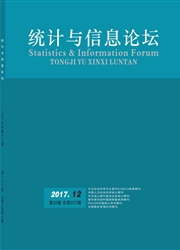

 中文摘要:
中文摘要:
合理的生猪生产布局对中国生猪产业可持续发展具有十分重要的意义,影响生猪生产区域变动的因素不能仅停留在感性认识上。基于Nerlove模型及经济学相关理论,结合各省级单位的面板数据建立动态自回归模型,对中国生猪生产布局变动的规律、特点、趋势及其效果作出系统的测度和分析。研究表明:中国生猪生产区域布局经历了五次比较大的变动,而粮食产量、原有饲养规模、消费市场的潜力、交通运输的通达性、气候条件、畜牧业与种植业的比较优势等都是影响生猪生产区域格局的因素;从影响程度看,原有饲养规模和消费市场购买力水平影响最为突出,地区粮食产量对生猪生产布局影响不显著。此结论对优化中国生猪生产布局具有指导意义。
 英文摘要:
英文摘要:
To the sustainable development of Chinas pig industry, reasonable layout of pig production is very important, to knowledge the impact of regional changes in pig production factors can not only remain in the sensibility. Based on the Nerlove model and economics theory, combined with the provincial units of the dynamic panel data, the authors establishes the regression model to find the laws of Chinas pig production layout changes, characteristics, trends and their effects. The results show that: regional distribution of pig production in China has experienced five large changes, food production, original size, potential consumer market, transport accessibility, climatic conditions, the comparative advantages of animal husbandry with farming are the factors of pig production factors. From the impact of view, keeping the original size and purchasing power of the consumer market is most prominent, regional food endowment is not significant. This conclusion is most instructive on the optimization of the layout of the pig industry.
 同期刊论文项目
同期刊论文项目
 同项目期刊论文
同项目期刊论文
 期刊信息
期刊信息
